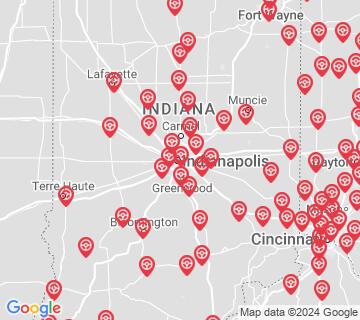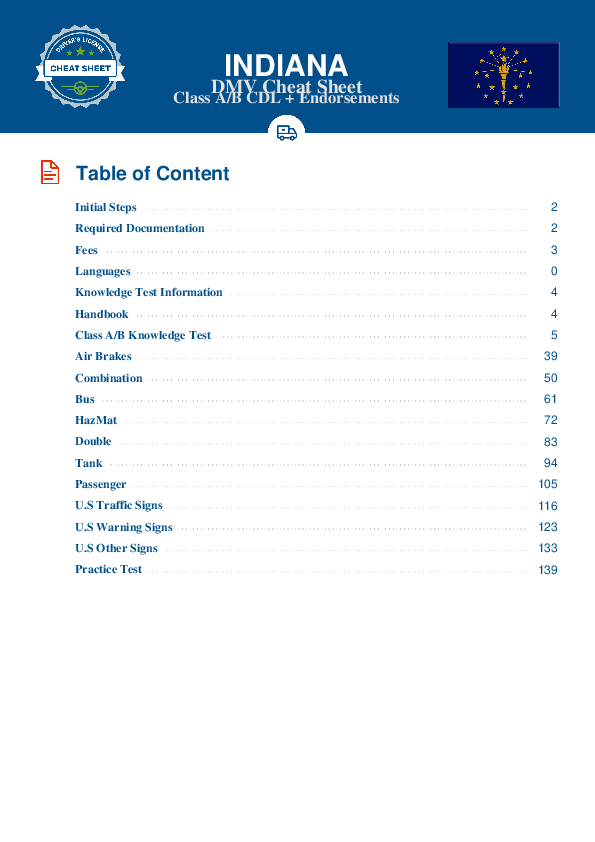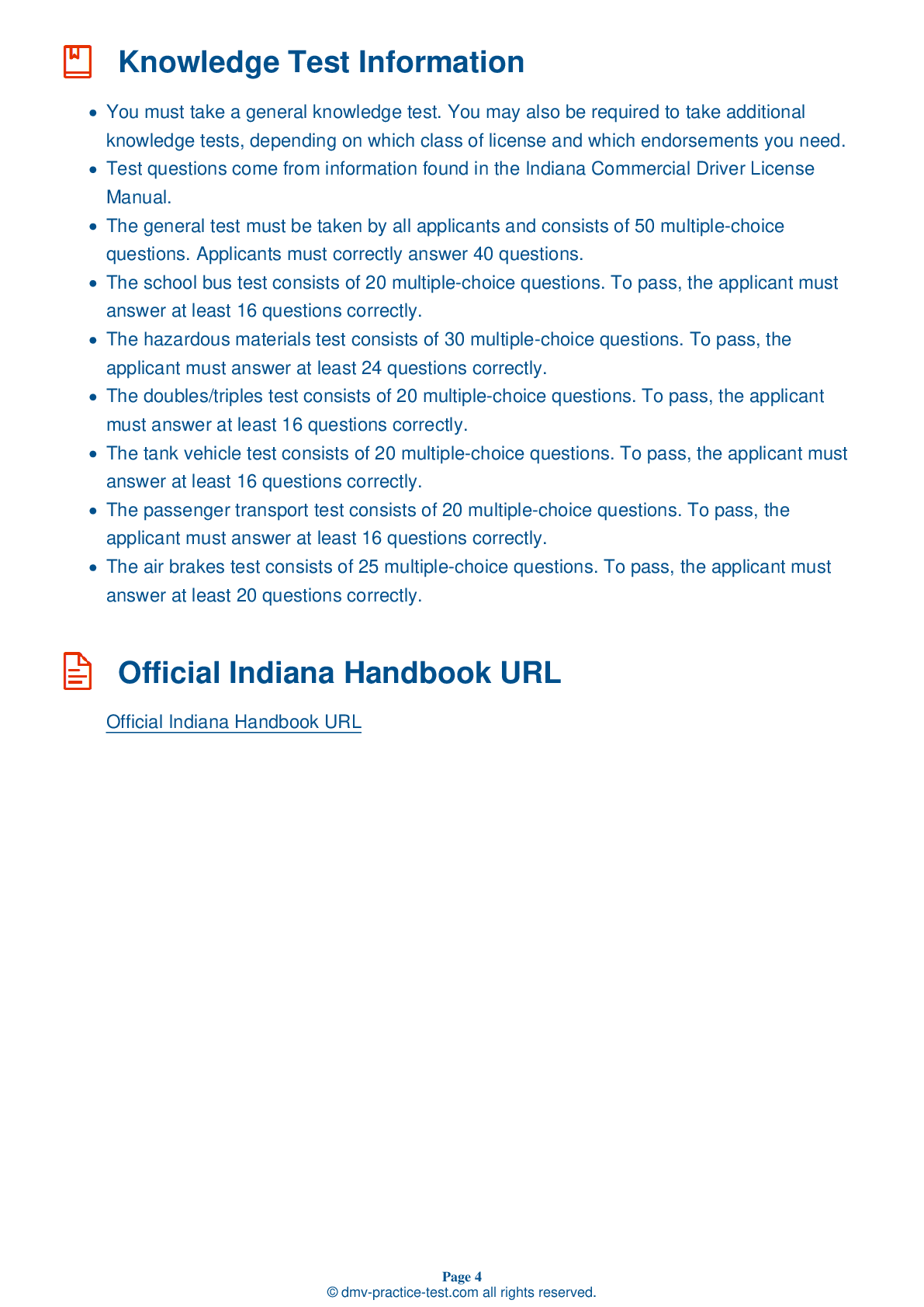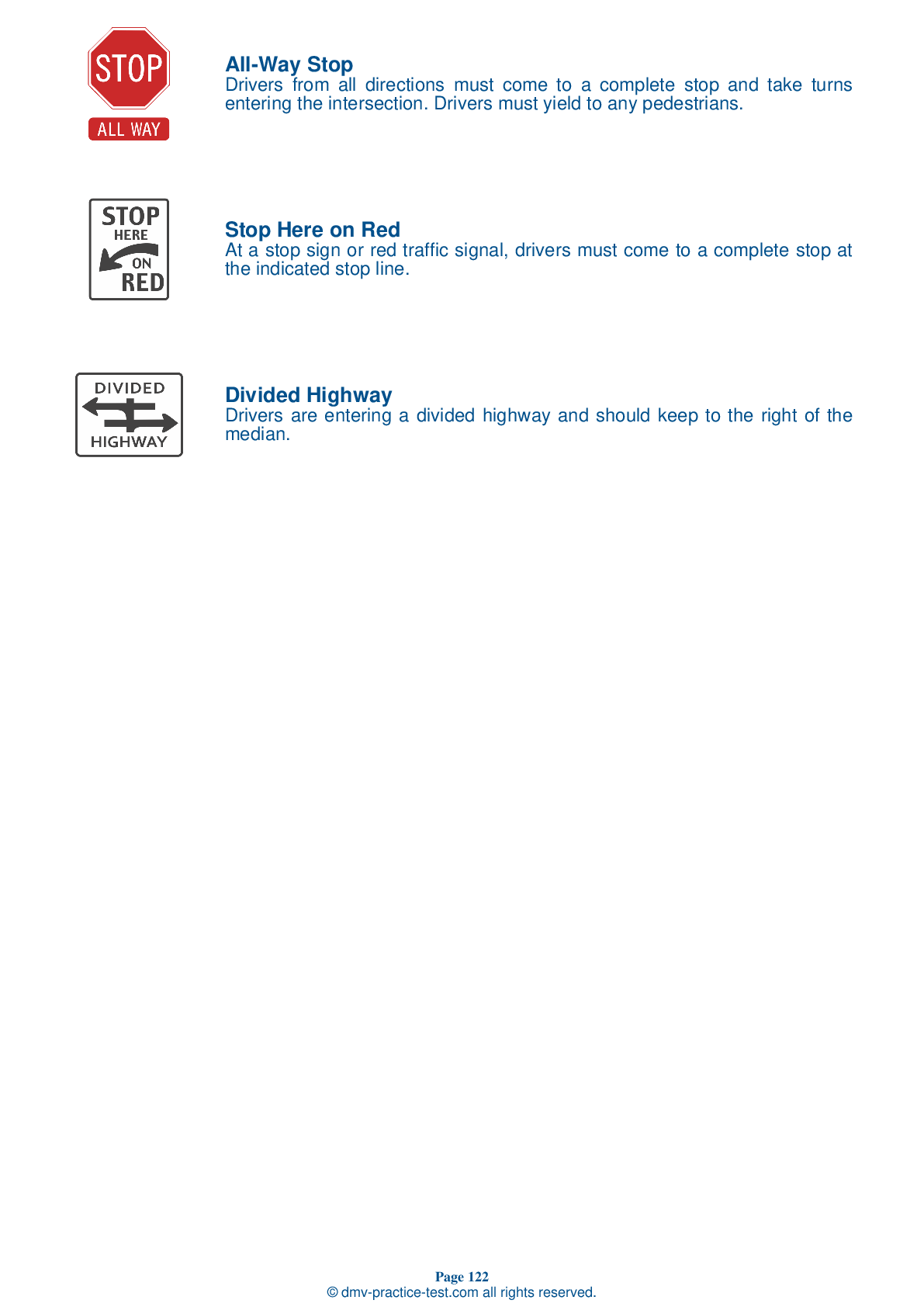Combination #2
Combination Vehicles Practice Test | Indiana 2025 #2 Page 3 of 3
Train for FREE online with our Indiana CDL combination vehicle test. The official exam test consists of several obligatory parts, with all of them checking your knowledge of different blocks of road rules. If you need to obtain a IN combination license in 2025, practice as much as possible. Free sample tests published on our website will help you check and improve your knowledge and boost your grades. Please bear in mind that DMV requirements for issuing a combination license may vary from state to state.
20
16
20
15 . What happens when the wheels of a trailer lock up?
The trailer will stop.
A trailer tends to swing around, potentially resulting in a trailer jackknife, if its wheels lock up.
16 . The trailer hand valve should:
Be used on slippery surfaces.
The trailer hand valve works the trailer brakes but should only be used when testing them. Using it while driving could create a skid. Never use the trailer hand valve while parking because doing so may release the air pressure from the braking system, releasing the brakes that are holding the vehicle in place.
17 . What is the Johnson bar?
A valve that allows for the release of excess pressure in the braking system
The trailer hand valve, also called the trolley valve or Johnson bar, is used to work the trailer brakes. It should be used only to test the brakes.
18 . The trailer hand valve:
Should only be used when transporting cargo.
The trailer hand valve should not be used for parking. This could cause all of the air to leak out of the braking system, resulting in the brakes releasing. Instead, use the parking brake.
19 . Which of the following types of vehicles is most prone to the “crack-the-whip" effect?
A triple combination
Double and triple combinations are the most vulnerable to turning over as a result of the "crack-the-whip" effect.
20 . ____ are the cause of more than half of all accident-related truck driver deaths.
Pedestrians
More than half of all accident-related truck driver deaths are a result of truck rollovers. To help prevent a rollover, be sure to load cargo low to the ground and centered on your rig. Take corners slowly and carefully.
Search the best driving school in your neighbourhood
2025 Indiana | Frequently Asked Questions
To acquire a CDL Hazmat endorsement in Indiana, you must hold a valid CDL. Then, pass the Hazardous Materials Endorsement Knowledge Test at a BMV branch. After passing, submit fingerprints for a federal TSA background check. Once cleared, you'll receive your endorsement. Remember, the endorsement must be renewed every five years with a new background check.
To obtain a CDL Hazmat license in Indiana, you must first have a commercial driver's license (CDL). Then, you'll need to pass the Hazardous Materials Endorsement Knowledge Test, provide proof of U.S. citizenship or lawful permanent residency, and pass a TSA background check. Finally, you must submit a self-certification form and medical examiner's certificate.
To apply for a CDL Hazmat endorsement in Indiana, you must provide: proof of U.S. citizenship or lawful permanent residency (e.g., passport, birth certificate), your current CDL, proof of Indiana residency, and a completed application. Additionally, a medical examiner's certificate and a self-certification form are required. Lastly, you'll need documentation confirming you passed the TSA background check.
Yes, there is a dedicated written test for the CDL Hazmat endorsement in Indiana. The Hazardous Materials Endorsement Knowledge Test is designed to evaluate your understanding of the regulations and safety procedures associated with transporting hazardous materials. It's important to prepare thoroughly for this test using the Indiana CDL manual or other study materials.
The written test for the CDL Hazmat endorsement covers several subjects including: understanding hazard classifications, recognizing placards and labels, transporting hazardous materials safely, loading and unloading hazardous materials, and handling emergencies or accidents involving hazardous materials. It also tests knowledge about federal and state regulations for transporting such materials.
Yes, there are extra charges associated with acquiring a CDL Hazmat endorsement in Indiana. These include fees for the knowledge test, endorsement application, and fingerprinting for the TSA background check. The exact fees can vary, so it's recommended to check with the Indiana Bureau of Motor Vehicles or the TSA for current pricing.
Yes, background checks and security clearances are mandatory for the CDL Hazmat endorsement in Indiana. The Transportation Security Administration (TSA) conducts a fingerprint-based Criminal History Records Check and a security threat assessment to ensure the applicant does not pose a security threat. This is a federal requirement for all states.
Yes, specialized training is required for the CDL Hazmat endorsement. You must pass a written test that covers topics like handling hazardous materials, recognizing placards and labels, and emergency procedures. After passing, you'll receive a certificate of training which is mandatory when applying for the endorsement. Regular refresher training is also required.
No, you cannot legally transport hazardous materials without a valid CDL Hazmat endorsement in Indiana. The endorsement ensures that drivers have the necessary training and knowledge to handle and transport hazardous materials safely. Violating this requirement can result in significant fines and penalties.
Yes, you can add the CDL Hazmat endorsement to your current CDL license. It doesn't require a new application for a CDL, but you must pass the Hazmat knowledge test, pay the endorsement fee, and successfully complete the TSA background check and fingerprinting.




